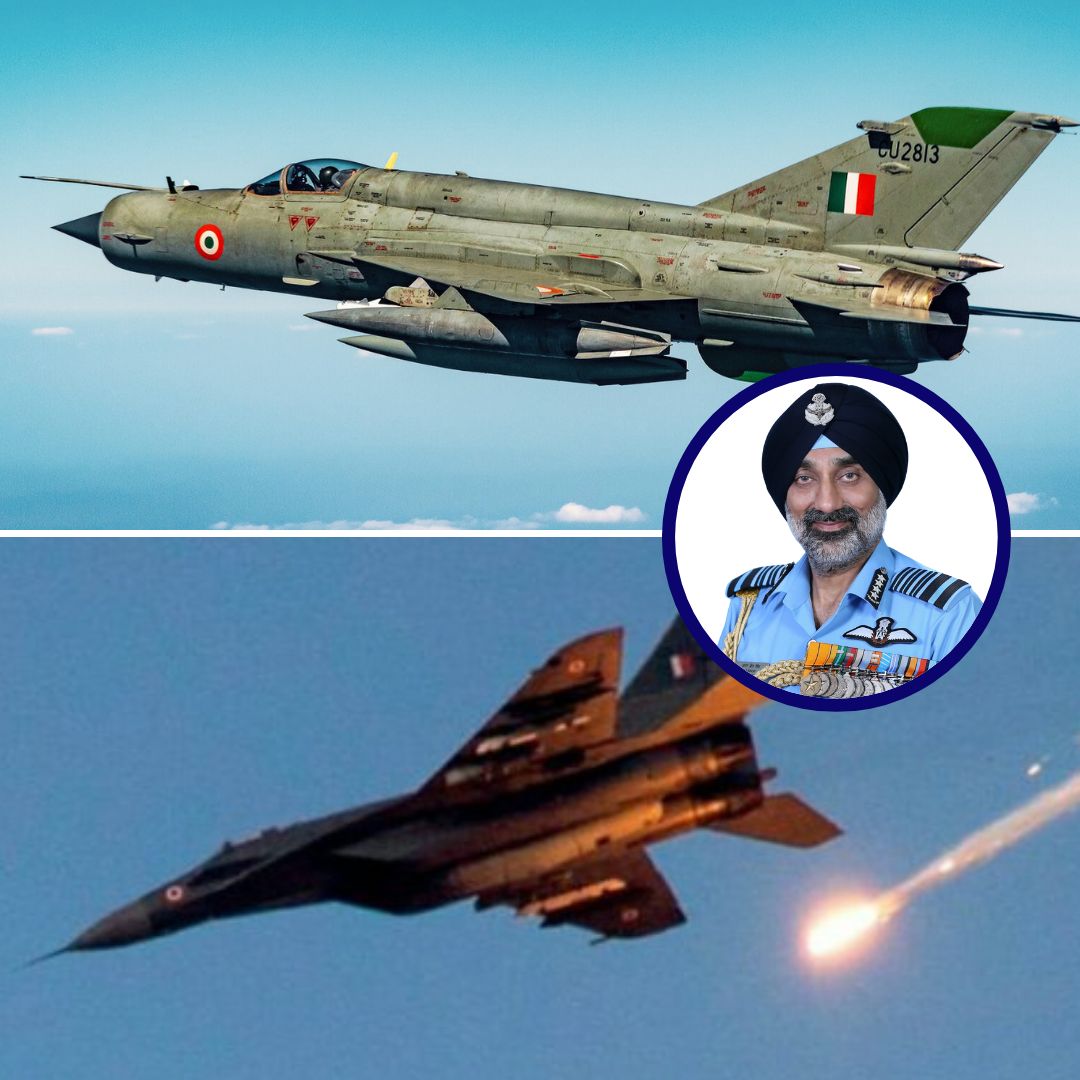The Indian Air Force (IAF) is set to retire its iconic MiG-21 fighter jet on September 19, 2025, after more than six decades of remarkable service. A farewell ceremony will be held at the Chandigarh airbase, where the 23rd Squadron, famously known as the Panthers, will complete the jet’s final flight.
Since its induction in 1963, the MiG-21 has played a crucial role in India’s aerial defence, participating in wars and crucial strikes, including the 1965 and 1971 Indo-Pak wars, the Kargil conflict, and the 2019 Balakot airstrikes. The retirement reflects a shift towards modernisation with the indigenous Tejas Light Combat Aircraft (LCA) intended as its successor. The IAF, however, will face a reduction in its fighter squadron strength, dropping to 29 from the sanctioned 42, raising concerns about readiness amid the transition.
A Legendary Workhorse’s Last Flight
The MiG-21, designed and produced by the Soviet Union’s Mikoyan-Gurevich Design Bureau, was India’s first supersonic fighter jet and became the backbone of the Indian Air Force for decades. Between 1963 and the early 2000s, India operated over 800 MiG-21s in various upgraded variants, including the latest Bison version that still forms the majority of the remaining fleet.
The jet earned a storied reputation for speed, agility, and combat readiness and played pivotal roles in India’s defence through several major wars and operations. Its name is etched in history for acts of valour like Wing Commander Abhinandan Varthaman’s 2019 mission where his MiG-21 Bison successfully engaged a Pakistani F-16 aircraft in the Balakot airstrikes.
Despite its legendary status, the MiG-21 earned the grim sobriquet “Flying Coffin” due to its unfortunate safety record. Over 400 accidents involving the aircraft have been recorded in India, resulting in around 200 pilot fatalities. This high accident rate was attributed to ageing airframes, challenging flight characteristics, and maintenance difficulties.
Recently retired Air Chief Marshal R.K.S. Bhadauria lauded the aircraft’s long service, stating, “The MiG-21 will always be remembered for its unmatched agility and the dedication of those who flew it. It served the nation well, but the times demand modern, safer platforms.”
Transitioning to the Future: Tejas and Beyond
The official retirement of the MiG-21 jets comes amid the ongoing modernisation challenges within the IAF. India’s indigenous Light Combat Aircraft (LCA) – the Tejas Mk-1A – was designed to replace the ageing Soviet-era jets. However, production delays and technological teething problems mean that the MiG-21 fleet had to be kept in operation beyond initial expectations. The government’s Rs 48,000 crore contract for 83 Tejas jets, with plans to procure nearly 180 more in the future, reflects India’s commitment to ‘Make in India’ defence ambitions.
Currently, only two MiG-21 squadrons remain operational. Their imminent retirement will reduce the IAF’s sanctioned strength of 42 squadrons to just 29, a capability gap that raises concerns among defence experts given India’s security challenges.
An IAF spokesperson highlighted this critical juncture: “Phasing out legacy aircraft such as the MiG-21 is essential to improve safety and operational effectiveness. However, the gap between decommissioned squadrons and incoming Tejas jets must be carefully managed to maintain air defence readiness.”
The Logical Indian’s Perspective
The retirement of the MiG-21 is a poignant reminder of the fine line that nations walk between legacy and progress. As much as it is a celebration of technological advancement — with the Tejas symbolising India’s growing self-reliance in defence — this moment also calls for reflection on the sacrifices made by countless pilots, engineers, and ground crew who kept these jets flying.
While the MiG-21 served as a formidable protector of Indian airspace, it also carried a heavy human cost that we must remember with empathy and respect.
At a time when peace and dialogue remain crucial in the region, it is important that India balances military modernisation with an emphasis on coexistence and restraint. The legacy of the MiG-21, with all its complexities, teaches us that military strength must be coupled with wisdom, and progress must go hand in hand with reverence for human life and history.












